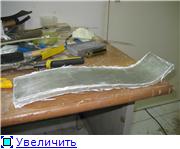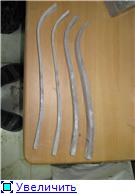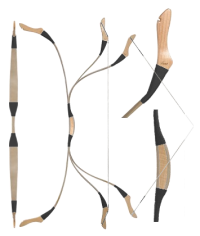Process inspired by Serый > Making limbs for a crossbow





















































If there is a will, there is a way.


If there is a will, there is a way.


If there is a will, there is a way.



If there is a will, there is a way.
















 Can you please shoe us the full draw picture ...and if it's possible the way you are planing to mount the bow.
Can you please shoe us the full draw picture ...and if it's possible the way you are planing to mount the bow.  если не трудно можно посмотреть как лук выглядит при полной натяжке...ну и конечно же хотелось бы увидеть крепеж.
если не трудно можно посмотреть как лук выглядит при полной натяжке...ну и конечно же хотелось бы увидеть крепеж.kiwijim wrote:...I've just down loaded Google Sketch It.
Lets see if I can get my head around it...


If there is a will, there is a way.



 , but adding a "string bridge" like on old Mongolian horse bows would be an interesting experience.
, but adding a "string bridge" like on old Mongolian horse bows would be an interesting experience. 



Doesn't mean
I'm new to crossbows

If there is a will, there is a way.

kiwijim wrote:Hi Ivo,
I'm waiting for the same day!

The way I was thinking of doing it was to use a two post system, let me explain....
The glass and carbon tow would be wrapped around two adjustable posts- just like making an endless string. The posts would be ridged to allow the tow to be distributed evenly up and down the posts with no bunching. Once all the strands are laid up, the jig would be laid on its side on a clean surface and the epoxy would be worked into the strands, prehaps even with a comb. The tow would be wound firmly enough to keep it in place, but not so firmly as too hinder glue saturation. When to all the strands are saturated, the posts would be pulled apart, imparting as much tension as possible to the tow.
This bundle of of pretensioned and glue saturated fibre (still on the jig) would then be turned on its side again, pressed in the form and left to cure.
The action of pressing the bundle will inpart even more tension to the strands in the same way a bridle draws the prod to the tiller.
Does that make sense? I hope I am not just rambling on here!
To incorporate carbon, I would use two jigs.
The first jig would be firstly wound in several layers of carbon tow, then the outer layer of the bundle would be a very fine layer of glass tow. The fine layer of glass means that there is no soft carbon fibre exposed on the back of the limb.
The second jig would be wound thickly with glass tow. This will be the belly.
The two bundles, still on their jigs are placed one on top of the other in the form, pressed together and left to cure
A strip of scrim would be placed in the centre of each bundle to provide lateral stability and resist splitting.
Well thats my theory everyone!It may work, or it may be a dog. I can't comment until it is tested! What I need is a 48 hour day, to get all my projects out of the way


Regards
James
Ivo wrote:So I've been thinking and actually loved the idea...we talked about it once with the guys at arbalet.info forum...the reason tow was not used is because guys couldn't get their hands on it easily when fiberglass cloth kits are preactically on every corner so in the end they settled with dismantling the cloth.
I liked your idea a lot...and I'd like to add one little detail
http://sketchup.google.com/3dwarehouse/details?mid=5ab8ca270822a30bd90c105376b9c5d5
I think using little clips(forgot to draw the lock) to lock in place the tow and keep it from separating while introducing the resin...I'm sure it will also help hold everything together much better while combining with other loops like it and carrying them to the form.
PS: I know the wooden things in my drawing are huge...don't panic....it's an exaggeration.
If there is a will, there is a way.

Doesn't mean
I'm new to crossbows

Doesn't mean
I'm new to crossbows


Doesn't mean
I'm new to crossbows

hiRegerald wrote:Some picts. how did I make fiberglass prodd using uni-d glass tape and fine modelling plywood as a middle layer.



Regerald wrote:
Here is full-draw image.. It seems like edges of a prod have to be little thinner, next time I will make better shape =)
This
prod is 58cm (23'') cross-section in the middle is 38/10mm
(1.52''/0.4'') and 25/5.5mm (1''/0.22'') at the edges. Draw weight is
about 130 lbs with a 7'' draw distance.
Current string is little bit too loose, it wasn't designed for this limbs. Here it's just for testing..
Doesn't mean
I'm new to crossbows

hi only one question pleas tell me which type of wood you usesairaj999 wrote:hiRegerald wrote:Some picts. how did I make fiberglass prodd using uni-d glass tape and fine modelling plywood as a middle layer.hello i want to ask one question that what was size of prod wood you used and how many layers of wood and fiberglass u use


 for
for 


|
|
|
Other |